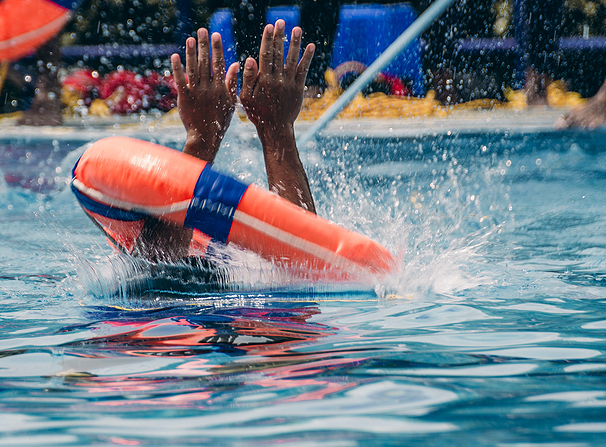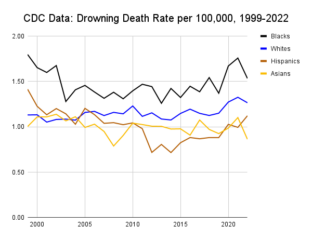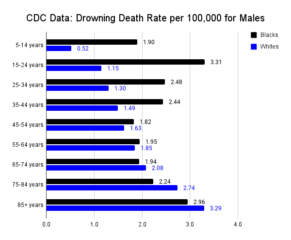
January 17, 2024

Source: Bigstock
I think I’ve stumbled upon one type of education that actually would effectively reduce an unfortunate racial gap.
Most forms of instruction don’t, of course.
In the first dozen years of this century, billionaires such as Bill Gates and Mark Zuckerberg and politicians like George W. Bush and Ted Kennedy obsessed over school reform as the cure for what ails us, racially speaking. All we have to do, they agreed, is fix education and then racial gaps would vanish.
So, a lot of public and private money was spent on a variety of initiatives, leftist, rightist, and centrist.
But then…nothing much happened. The gaps in school performance between the races didn’t go away as promised.
Why not? Because as serious social scientists have been discovering ever since the federal Coleman Report of 1966, schools don’t cause race disparities in cognitive achievement. So they probably can’t fix them, either.
And if you manage to actually improve schooling, you’ll benefit whites as well as blacks, which wouldn’t narrow the gap. Indeed, bettering education might well widen the gap: Going back to when Aristotle studied under Plato and Plato under Socrates, it’s been recognized that the brighter the student, the more he benefits from a better teacher.
This doesn’t mean that schooling can’t be improved, but it’s harder to come up with reforms that might do some good when you are given an impossible goal.
For example, if you invent a genius way to improve teaching that makes twice as many black students and three times as many white students grow up to be qualified to be artificial intelligence engineers, then you would be blamed for having worsened The Gap.
Thus, in 2010 I suggested that instead of the Establishment’s aim to improve black and Hispanic performance by roughly one standard deviation while, somehow, not allowing whites and Asians to get any better educated, it would be far more sensible to try to improve each group’s performance by one-half of a standard deviation.
Not surprisingly, faith in school reform fizzled out during the 2010s. Unfortunately, it was replaced not by realism but by racism: The Great Awokening assumes that racial disparities are the result not of bureaucratic incompetence that needs to be remedied but of white evilness that demands to be avenged.
Yet, I can imagine a variety of education that probably actually does some good at reducing racial disparities, one that, if billionaires feel like giving, our society could use more of: swimming lessons.
Unlike futile attempts to close the IQ Gap so that physicists are diverse, swim instruction doesn’t attempt to make the U.S. Olympic team at Paris in 2024 less white, it just tries to make young people good enough at swimming so they don’t drown.
Overall, there aren’t huge racial disparities in deaths by accidental drowning per capita the way there are in homicides. Instead, it’s more like traffic fatality deaths:

As with car crash deaths, American Indians drown the most, followed by blacks, then whites, and with Asians and Hispanics competing for the lowest rate.
As with other Deaths of Exuberance, such as shootings and car crashes (the inverse of the Deaths of Despair that notoriously soared in 2000–2015), drownings went up during the “racial reckoning” of the 2020s.
Of course, there are huge differences in how much exposure to the water different races have. Whites own more swimming pools, boats, lakeside homes, and surfboards than do blacks, so they tend to have more opportunities to drown. (And yet, they don’t.)
Even so, there are big race gaps between younger males, reflecting the need for more swimming instruction:

Black boys ages 5–14 drown 3.7 times as often as white boys, while black youths 15–24 drown 2.9 times as often as white youths. Black boys dying in motel swimming pools is tragically common.
Girls drown much less often than boys because they are less daring and less likely to show off by taking risks. Also, many black females don’t like getting in the water because of its effects on their hair. (That may sound snarky, but please take me seriously when I say this: If there is one thing we’ve learned during the Age of Intersectionality’s push to center black women’s voices, it’s that black women are extremely concerned with their hair.)
One clear reason for this difference in death rates by race is that more black kids don’t know how to swim. Voice of America reported in 2022:
Some 64 percent of Black children know little or nothing about swimming, compared to 40 percent of white children, according to USA Swimming, a national federation.
And 40 percent of whites not being good swimmers is bad as well (although USA Swimming probably has higher standards than are absolutely necessary).
Unfortunately, our culture is moving toward excusing not knowing how to swim on the grounds that getting young people to learn how to swim is racist.
Personally, I’m an anti-drownist, but that’s not fashionable these days. Drowning in the name of racial justice is more au courant during the Black Lives Matter era.
For instance, it used to be fairly common at upscale colleges to give all freshmen a swimming test and require those who flunked it to take a beginning swimming class. But that’s changed. For example, Williams College, one of the most elite small liberal arts colleges in the country, junked its swimming requirement in 2022 due to wokeness. The Chronicles of Higher Education reports:
Generations of Williams College students have studied in the foothills of the purple Berkshire Mountains, endured months of New England snow, and fulfilled a swim requirement in order to graduate. Now, the last of those will no longer continue after faculty voted earlier this month to eliminate the swim requirement, citing a disparate impact on underrepresented minority students as a key concern.
This is reflective of a general trend among high-end colleges, the only ones that could ever afford to make swimming competence mandatory, to eliminate swimming tests:
A 1997 survey by professors at North Carolina State University found only 5 percent of colleges had a swim-test requirement then, down from the 25 percent that once did.
The article explains that at Williams:
“Students expressed feeling shamed and punished for not knowing how to swim,” wrote D. Clinton Williams in an email to ‘The Chronicle.’ Williams is director of the college’s Pathways for Inclusive Excellence [PIE] and chairman of the Diversity Advisory Research Team [DART], which studied the swimming requirement. “One student told her first-year adviser, ‘It’s like they are punishing the city kids.’”
Unfortunately, drowning victims were unavailable to be interviewed about their feelings.
The Chronicle article then goes on to explain that the reason the beginner swim class at Williams was 81 percent domestic nonwhite students, 16 percent international, and only 3 percent white was due to swimming pool segregation several generations ago.
That may or may not be true, but it seems like a poor excuse for Williams (which competes with Amherst and Swarthmore for biggest endowment per student at a liberal arts college) not requiring its current students to learn how to swim.
My guess is that the chief agitators for abolishing college swim requirements are black women, who tend to be more overweight than their rivals. While many obese black women believe they look fine, the kind who get into Williams tend to be aware that they don’t match elite society’s beauty standards while wearing bathing suits.
In turn, the chief victims of black women’s anti-swimism are black men.
But then, in this age of Black Lives Matter, who cares about black lives?